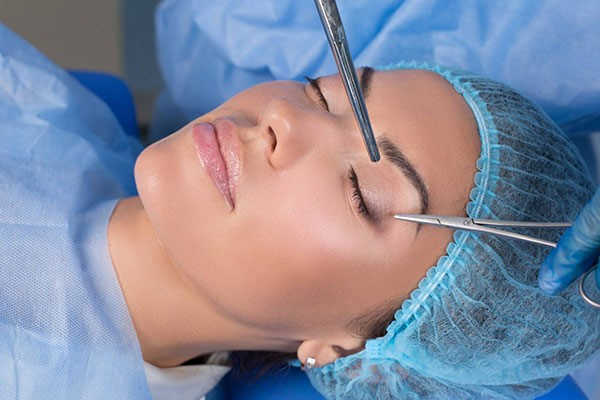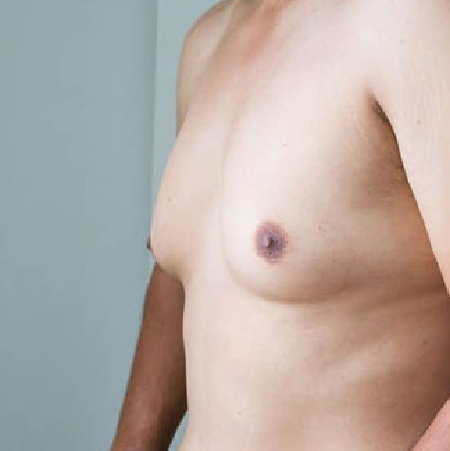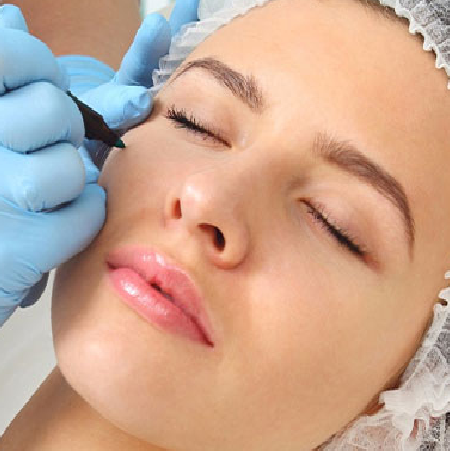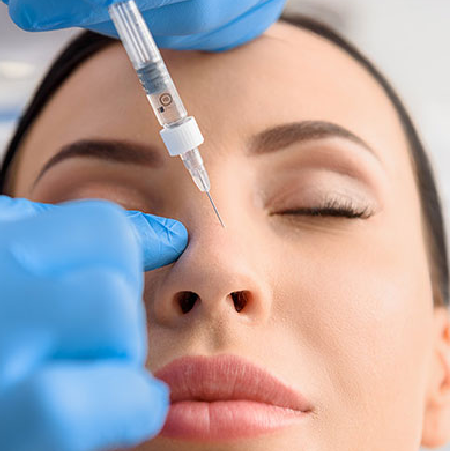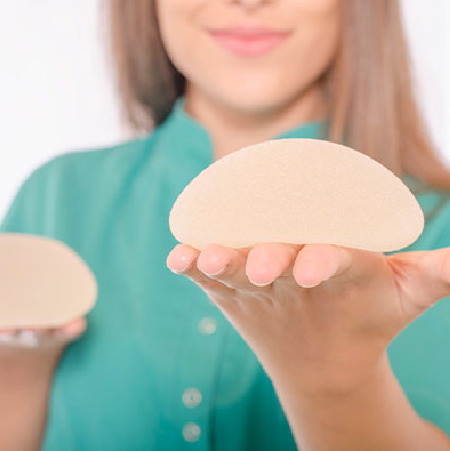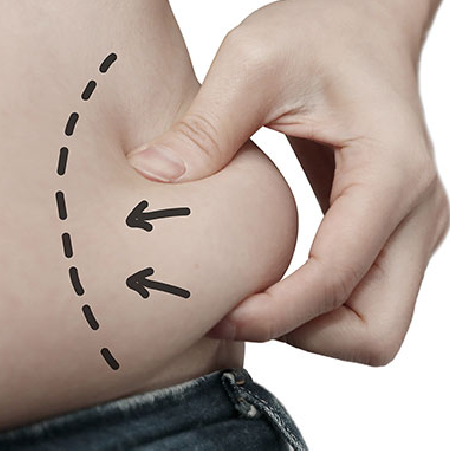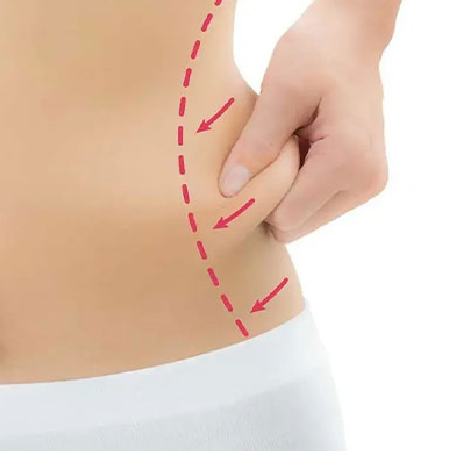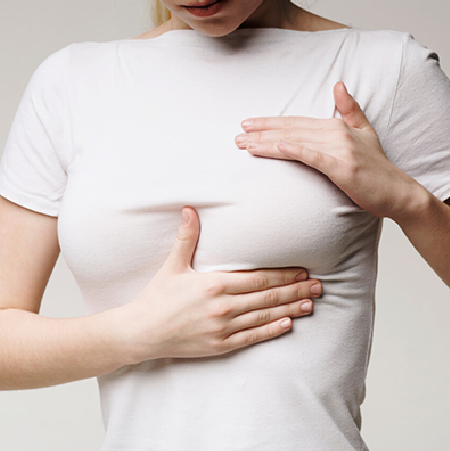Care After Eyelid Surgery

Blepharoplasty, or eyelid surgery, is a cosmetic surgical operation that tries to enhance the look of the eyelids. Excess skin, fat, and muscle are removed from the upper and/or lower eyelids, resulting in a more young and rejuvenated appearance. While the operation itself is very short and simple, the recuperation phase can be more difficult. Aftercare is critical for a successful recovery and the greatest potential outcome.
Here are some tips for caring after eyelid surgery:
- Carefully follow your surgeon’s post-operative instructions: It is critical to carefully follow your surgeon’s post-operative instructions. They will give you precise instructions on how to care for your eyelids, such as when to apply ointment or drops, how to clean the incision site, and how to deal with any discomfort.
- Elevate your head: Elevating your head might assist minimize swelling and bruising. While sleeping or relaxing, use pillows to prop your head up.
- Use cold compresses: Putting a cold compress to the eyelids, such as a bag of frozen peas or a cold gel pack, will help minimize swelling and bruising. To protect your skin, cover the compress in a clean cloth or towel.
- Avoid vigorous activities: For at least two weeks after surgery, avoid intense activities such as heavy lifting or exercise. These activities might create edema and delay the healing process by increasing blood flow to the face.
- Wear sunglasses: Sunglasses can shield your eyes from the sun’s damaging rays and aid in the reduction of swelling. Pick a pair with appropriate coverage and a dark hue.
- Avoid smoking and drinking: Smoking and alcohol can both impede recovery and raise the chance of complications. For at least two weeks after surgery, refrain from smoking and consuming alcohol.
- Eat a healthy diet rich in vitamins and minerals: Consuming a healthy diet rich in vitamins and minerals will assist promote healing. Consume high-protein meals such as lean meats, fish, and legumes while avoiding processed and high-sodium foods.
- Be patient: Healing takes time, and the swelling and bruising may not go away for several weeks. Be patient and give yourself enough time to recuperate.
Finally, after-care is critical for a good recovery from eyelid surgery. Keep your head up, apply cold compresses, avoid vigorous activity, wear sunglasses, avoid smoking and drinking, eat a balanced diet, and be patient. You may attain the greatest potential result and enjoy a more youthful and rejuvenated appearance with appropriate aftercare.
Eyelid surgery incision site care
Incisions are made on the upper and/or lower eyelids, superfluous skin, fat, and muscle are removed, and the wounds are closed with sutures. Appropriate incision site care is critical for a speedy recovery and reducing the risk of infection or scarring.
Here are some pointers on how to care for the incision areas following eyelid surgery:
- Maintain clean incisions: It is critical to keep the incisions clean in order to avoid infection. Your surgeon will give you particular instructions for cleaning the incisions, such as using a saline solution or mild soap and water. Avoid touching or irritating the incisions when cleaning them.
- Apply ointment or cream: Your surgeon may advise you to apply an ointment or cream to the incision areas. These products can aid in the prevention of infection, the reduction of swelling and redness, and the promotion of healing. Use the ointment or cream exactly as instructed by your surgeon.
- Avoid getting the incisions wet: During at least the first few days following surgery, avoid getting the wounds wet. This includes avoiding water-related activities such as showering and swimming. Before showering, your surgeon may advise you to cover the wounds with a waterproof bandage.
- Keep the incisions out of direct sunlight: Direct sunlight can promote scarring and discolouration of the incision sites. To protect the incisions from the sun, wear a hat or sunglasses and use sunscreen.
- Protect the incisions from sunlight: Sunlight can cause scarring and discoloration of the incision sites. Wear a hat or sunglasses and apply sunscreen to protect the incisions from sunlight.
- Avoid vigorous activities: For at least two weeks after surgery, avoid intense activity such as heavy lifting or exercise. These activities might create edema and delay the healing process by increasing blood flow to the face.
- Attend all follow-up meetings with your surgeon: Attend all follow-up appointments with your surgeon to monitor the healing process and ensure that no issues arise.
- Be patient: Healing takes time, and the wounds may not heal entirely for several weeks. Be patient and carefully follow your surgeon’s post-operative instructions.
Finally, adequate incision site care is critical for a complete recovery from eyelid surgery. Maintain clean wounds, use ointment or cream, avoid getting incisions wet, shield incisions from sunshine, avoid vigorous activity, attend follow-up visits, and be patient. With careful care, you can reduce the risk of infection or scarring while achieving the greatest possible result.
Diet and food after eyelid surgery
Blepharoplasty, or eyelid surgery in Iran , is a cosmetic operation that tries to enhance the look of the eyelids. Incisions are made on the upper and/or lower eyelids, superfluous skin, fat, and muscle are removed, and the wounds are closed with sutures. Appropriate incision site care is critical for a speedy recovery and reducing the risk of infection or scarring.
Here are some pointers on how to care for the incision areas following eyelid surgery:
- Keep the incisions clean: It is critical to keep the wounds clean in order to prevent infection. Your surgeon will give you particular instructions for cleaning the incisions, such as using a saline solution or mild soap and water. Avoid touching or irritating the incisions when cleaning them.
- Apply ointment or cream: Your surgeon may advise you to apply an ointment or cream to the incision areas. These products can aid in the prevention of infection, the reduction of swelling and redness, and the promotion of healing. Use the ointment or cream exactly as instructed by your surgeon.
- Avoid getting the incisions wet: During at least the first few days following surgery, avoid getting the wounds wet. This includes avoiding water-related activities such as showering and swimming. Before showering, your surgeon may advise you to cover the wounds with a waterproof bandage.
- Keep the incisions out of direct sunlight: Direct sunlight can promote scarring and discolouration of the incision sites. To protect the incisions from the sun, wear a hat or sunglasses and use sunscreen.
- Avoid vigorous activities: For at least two weeks after surgery, avoid intense activity such as heavy lifting or exercise. These activities might create edema and delay the healing process by increasing blood flow to the face.
- Attend all follow-up meetings with your surgeon: Attend all follow-up appointments with your surgeon to monitor the healing process and ensure that no issues arise.
- Be patient: Healing takes time, and the wounds may not heal entirely for several weeks. Be patient and carefully follow your surgeon’s post-operative instructions.
Appropriate incision site care is critical for a smooth recovery from eyelid surgery. Maintain clean wounds, use ointment or cream, avoid getting incisions wet, shield incisions from sunshine, avoid vigorous activity, attend follow-up visits, and be patient. With careful care, you can reduce the risk of infection or scarring while achieving the greatest possible result.
Care after laser eyelid surgery
Laser eyelid surgery, also known as laser blepharoplasty, is a cosmetic procedure that uses laser technology to improve the appearance of the eyelids. After the surgery, it is important to take proper care of the treated area to promote healing and minimize the risk of complications. Here are some tips on care after laser eyelid surgery:
- Keep the treated area clean: It is critical to maintain the treated area clean in order to avoid infection. Your surgeon will give you particular cleaning instructions, such as using a saline solution or a light soap and water. While washing the area, be careful and avoid rubbing or scratching it.
- Apply ointment or cream: Your surgeon may advise you to apply an ointment or lotion to the affected region. These products can aid in the prevention of infection, the reduction of swelling and redness, and the promotion of healing. Use the ointment or cream exactly as instructed by your surgeon.
- Use ice packs: Using ice packs after surgery might help minimize swelling and bruising. For the first several days after surgery, your surgeon may advise you to use cold packs.
- Avoid getting the treated region wet: During at least the first several days following surgery, avoid getting the treated area wet. This includes avoiding water-related activities such as showering and swimming. Before showering, your surgeon may advise you to cover the region with a waterproof bandage.
- Keep the treated area out of direct sunlight: Direct sunlight might induce scarring and discolouration of the treated region. Wear a hat or sunglasses and apply sunscreen to protect yourself from the sun.
- Avoid vigorous activities: For at least two weeks after surgery, avoid intense activities such as heavy lifting or exercise. These activities might create edema and delay the healing process by increasing blood flow to the face.
- Attend all follow-up meetings with your surgeon: Attend all follow-up appointments with your surgeon to monitor the healing process and ensure that no issues arise.
- Be patient: Healing takes time, and the treated region may take many weeks to completely recover. Be patient and carefully follow your surgeon’s post-operative instructions.
Finally, keep the treated area clean, use ointment or cream, use cold packs, avoid getting the treated area wet, protect the treated area from sunlight, avoid intense activity, and be patient. You may reduce the risk of problems and get the best possible outcome with adequate treatment.
Complications of eyelid surgery
As with any operation, there is the possibility of complications. Here are some of the risks associated with eyelid surgery:
- Bleeding: A typical consequence of eyelid surgery is bleeding. While it is typically mild, it can occasionally be more serious and necessitate further treatment.
- Infection: Infection is a risk with any operation, including eyelid surgery. Fever, edema, redness, and drainage from the incision site are all symptoms of infection.
- Scarring: Although incisions for eyelid surgery are normally placed in the natural creases of the eyelids, scarring is still possible. Scars may be apparent in some circumstances and necessitate further treatment.
- Dry eyes: Some individuals may develop dry eyes after eyelid surgery owing to changes in tear production or tear outflow. This might cause discomfort and may necessitate the use of eye drops or other therapies.
- Ectropion or entropion: Ectropion is a condition in which the lower eyelid rolls outward, exposing the inner surface of the eyelid and causing discomfort. Entropion occurs when the eyelid rotates inward, rubbing the eyelashes on the cornea. These problems can be painful and need further treatment.
- Changes in eyesight: In rare circumstances, eyelid surgery might result in visual problems such as double vision or fuzzy vision. These alterations are often transient and resolve on their own.
- Anesthesia complications: Anesthesia, like any procedure, has possible hazards, such as allergic responses, heart issues, and breathing difficulties.
Eyelid infection
Symptoms of an eyelid infection may include redness, swelling, itching, burning, and a gritty feeling in the eyes. You may also experience crusting or flaking around the eyelashes, and your eyes may be sensitive to light.
Treatment for eyelid infections typically involves a combination of good eyelid hygiene, warm compresses, and medication. This may include using antibiotic ointments or drops, anti-inflammatory medications, or other prescription medications as prescribed by a doctor.
If you suspect that you have an eyelid infection, it is important to see a doctor or ophthalmologist for an accurate diagnosis and appropriate treatment. They can help you identify the underlying cause of your symptoms and recommend the best course of action to relieve your discomfort and prevent the infection from spreading or worsening.
Eyelid cosmetic surgery result
Eyelid cosmetic surgery, in general, can enhance the look of droopy or sagging eyelids, eliminate under-eye bags or puffiness, and lessen the appearance of wrinkles or creases around the eyes. Some people may benefit from the operation by having extra skin or tissue removed that is blocking their eyesight.
While the effects of eyelid cosmetic surgery can be spectacular, it is crucial to have realistic expectations and recognize that the operation cannot entirely remove all symptoms of aging or make major changes to the overall appearance of the face. To reduce the risk of problems and get the best possible outcomes, it is also critical to select a trained and experienced surgeon and to follow all pre- and post-operative instructions.
FAQ
How much does it cost to lift your eyelid in Iran?
The cost of eyelid lift surgery (blepharoplasty) in Iran varies based on a number of criteria, including the surgeon’s skill, the kind of anesthetic used, the length of the operation, and the clinic or hospital’s location. Nonetheless, as compared to many other nations, the cost of eyelid lift surgery in Iran is often lower.
Is eyelid surgery painful?
Patients may suffer some soreness, swelling, and bruising around the eyes following surgery, although this is typically manageable with pain medication and cold compresses. Most patients say that any soreness is minor and goes away within a few days to a week of the procedure.


